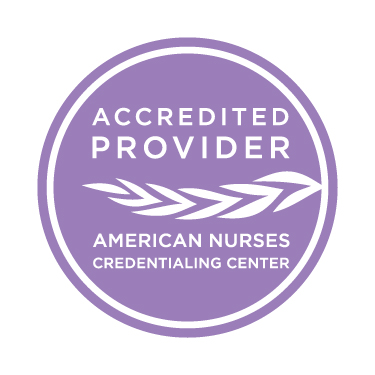ENPC Exam Questions
Download Ebook Study Guide For Tncc illustrated to clarify difficult issues and present information in a clear, concise manner. Unique Patient Populations section reviews the special care considerations and needs of unique patient groups including elderly, pediatric, pregnant, substance abusive, burned, and organ donors. Read Book Enpc Study Guide Free Enpc Study Guide Free Right here, we have countless ebook enpc study guide free and collections to check out. We additionally present variant types and then type of the books to browse. The okay book, fiction, history, novel, scientific research, as capably as various new sorts of books are readily friendly here. Express Training Solutions offers a wide variety of study guides to help students. The Non-Healthcare CPR/AED, BLS, ACLS, and TNCC study guides prepare students for their courses. Study guide materials for ACLS, PALS, PHTLS, and TNCC are also designed to help students pass their required pre-tests.
Start studying TNCC 8th Edition. Learn vocabulary, terms, and more with flashcards, games, and other study tools. File Type PDF Enpc Test Study Guide pivotal moment of Irish history, identity, and memory has had lasting consequences for the Irish definition of political conflict and how this is defined through commemoration. It argues that the ghosts of 1916 are in many ways the ghosts of 1998.
1. A preschooler has a small laceration that required 2 stitches. The nurse covers the wound with a bandage knowing that it will comfort the child to have it covered. What is the developmental reason for this intervention?a. Preschoolers are magical thinkers and imagine bandages keep their insides from coming out
b. Preschoolers fear physical disability and believe a bandage will prevent disability
c. Preschoolers explore orally and will likely chew or suck on the stitches if left uncovered
d. Preschoolers are concerned with body image and don’t want to appear different than peers
 2. A 7-month-old presents to the emergency department with a complaint of fever. Assessment reveals a patent airway and slight cyanosis around his lips and nail beds. He is alert and interactive. His vital signs are 38.5° C (101.3° F), HR 134, RR 32, BP 78/54 mm Hg, and SpO2 84%. The nurse notes a healed surgical scar on his chest. Based on this assessment, what is the nurse’s priority?
2. A 7-month-old presents to the emergency department with a complaint of fever. Assessment reveals a patent airway and slight cyanosis around his lips and nail beds. He is alert and interactive. His vital signs are 38.5° C (101.3° F), HR 134, RR 32, BP 78/54 mm Hg, and SpO2 84%. The nurse notes a healed surgical scar on his chest. Based on this assessment, what is the nurse’s priority?a. Administer ibuprofen to treat the fever
b. Begin oxygen via a nonrebreather mask
c. Obtain a surgical history
d. Ask if the SpO2 is normal for him
3. An 11-year-old presents to the emergency department with a complaint of hitting his head while playing soccer. The nurse enters the room and performs an across-the-room assessment. He is staring at the wall. He has no increased work of breathing, and his color is pink. Using the pediatric assessment triangle (PAT), what classification will the nurse assign?

a. Well
b. Sick
c. Sicker
d. Sickest
4. The pediatric prioritization process components include the focused assessment, focused history, acuity rating decision and:
a. the pediatric assessment triangle (PAT).
b. developmental characteristics.
c. head-to-toe assessment.
d. life-saving interventions.
5. A 2-year-old is brought to the emergency department by her father when he found her face down in the pool. She remains unresponsive and is breathing shallowly and slowly. Her color is pale. What is the priority?
a. Administer 100% oxygen
b. Immobilize the cervical spine
c. Begin bag-mask ventilation
d. Insert an oral airway
6. A 2-year-old has a suspected cervical spinal injury. In order to ensure neutral spinal alignment, padding should be placed under which area?
a. Shoulders
b. Head
c. Neck
d. Waist
7. The nurse is preparing to administer a feeding through a nasogastric feeding tube. The tube position was verified by radiograph after insertion 2 hours ago. What is the best way to verify placement before feeding?
a. Instill air and listen over the epigastrium
b. Test the pH of the gastric contents
c. Observe color of a gastric aspirate sample
d. Repeat the radiograph
8. What is the best method to rapidly administer a 20 mL/kg bolus of 0.9% normal saline to a pediatric patient weighing 8 kg?
a. A 20-mL syringe with a stopcock
 b. A syringe pump
b. A syringe pumpc. A rapid infuser
d. A pressure bag
9. Immediately after intraosseous insertion the nurse assesses the infusion and notes that the fluid is not dripping. How should the nurse respond?
a. Use an infusion pump to deliver the fluids
b. Remove the device and insert in another site
c. Advance the device and reassess the flow
d. Attempt to aspirate bone marrow

Enpc 5th Edition Study Guide
10. A 13-month-old presents to the emergency department with a 2-day history of a low-grade fever, increased work of breathing, and tonight developed a barking cough and inspiratory stridor. What condition does the nurse suspect?a. Epiglottitis
b. Foreign body aspiration
c. Tracheomalacia
d. Croup
Enpc Study Guide Quizlet
Ans:- 1:A, 2:*, 3:C, 4:*, 5:B, 6:*, 7:B, 8:*, 9:A, 10:*Free Enpc Study Guide
enpc enpc 4th edition practice test answers enpc 4th edition test answers enpc certification enpc exam enpc exam questions enpc practice questions enpc practice test enpc practice test answers enpc practice test questions enpc pretest enpc questions enpc questions and answers enpc review enpc study guide enpc test enpc test 2017 enpc test answers enpc test bank enpc test questions free enpc written test enpc written test answers